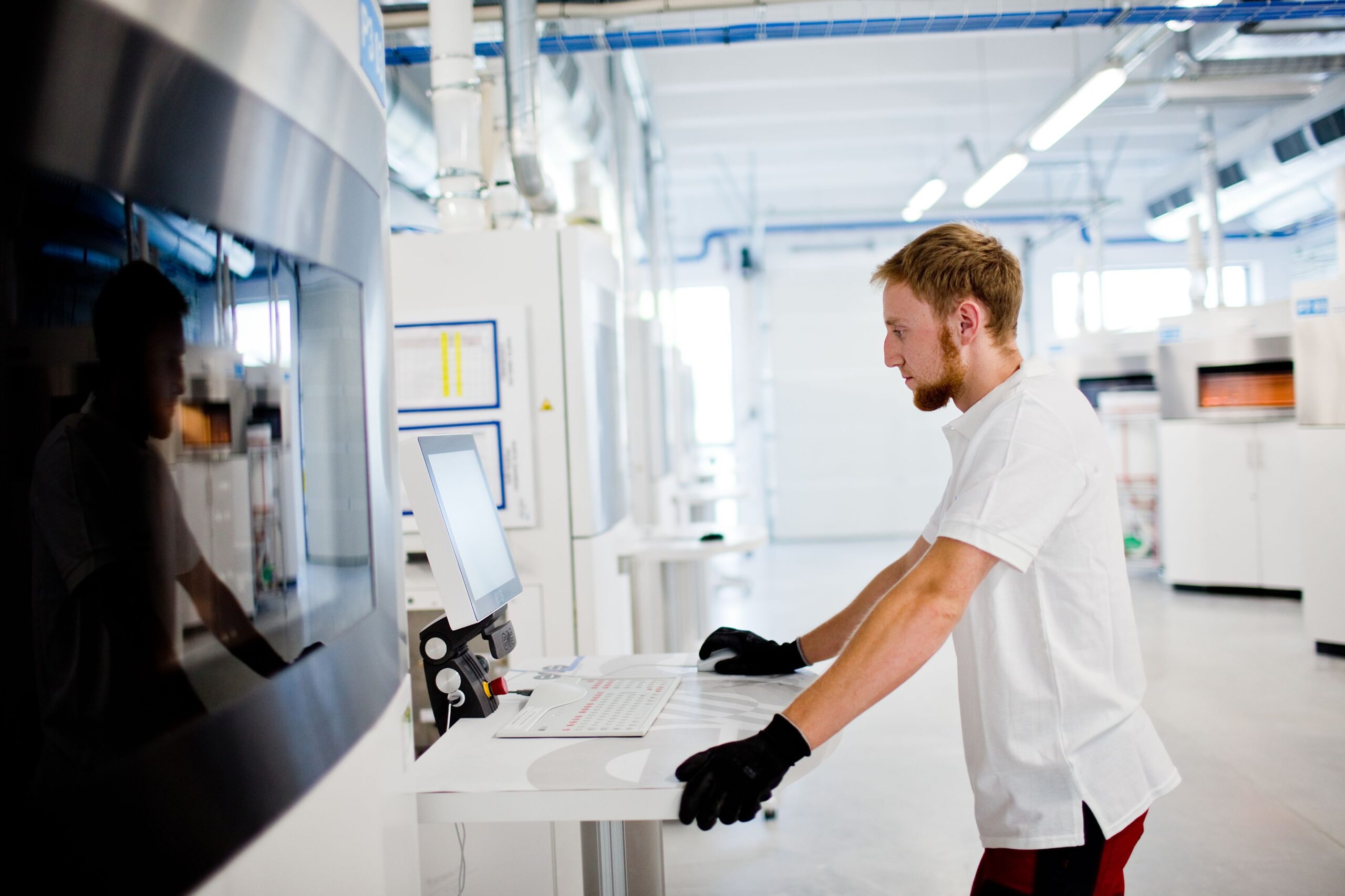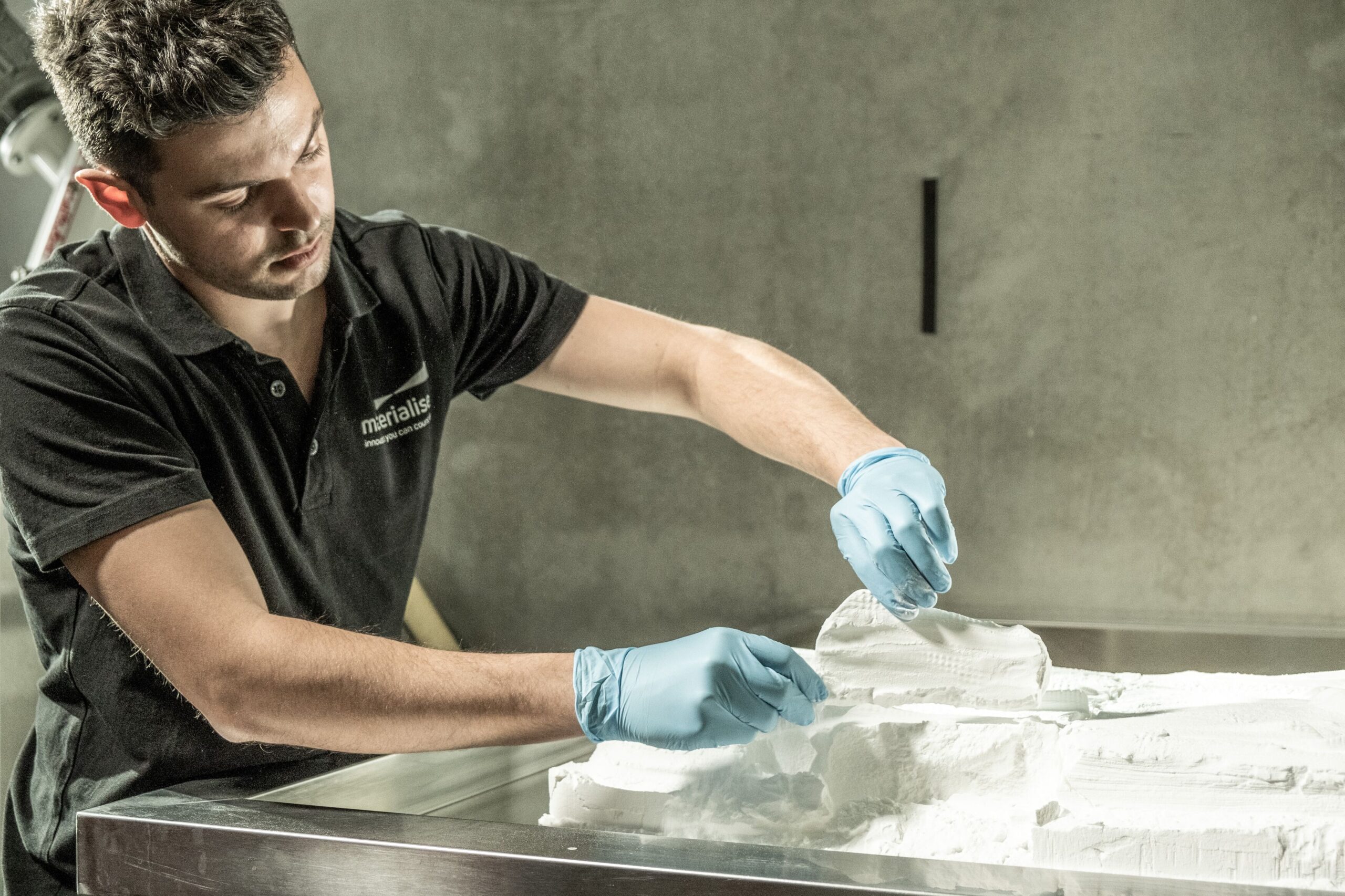In the world of 3D printing, we stand to witness a revolution unfold before our eyes. As the saying goes, “There’s a time and place for everything,” and for 3D printing, it’s not just one but two distinct approaches that define its trajectory.
On one front, there’s the conventional model, where 3D printing serves as a service, conveniently provided by service bureaus to companies seeking external expertise. It’s a utilitarian solution for those in need of quick, affordable, one-off parts and prototypes. This model serves as the gateway for the wider public to dip their toes into the technology’s waters. On the flip side, there’s a growing market for 3D-printed end-use parts. In this market, the spotlight shines brightest on the repeat parts segment; the production of similar parts in large quantities. This segment is fueled not only by sustainability demands but also by the technological strides in the 3D printing industry.
This juncture, where prototyping and end-parts equally share the stage, signals a significant tipping point in the technology’s utilization.

Traditionally, skeptics posed the perennial question: “Can 3D printing evolve into a mass-manufacturing technology?” The answer was always nuanced: “It depends.” For widespread adoption, the cost-benefit equilibrium needs to tilt favorably. But surprisingly to some, it’s happening. By integrating 3D printing’s design capabilities into industrial-scale production processes at a feasible cost, we are witnessing the onset of a new phase in manufacturing.
Yet, amidst the optimism, a pragmatic acknowledgment surfaces — the unique needs and challenges of this repeat product market. The complexity of 3D-printed repeat parts is often higher compared to prototyping parts, and it comes with the daunting task of maintaining quality. At the same time, companies eyeing strategic scaling often grapple with a lack of knowledge and expertise in integrating 3D printing with existing production processes, potentially impeding its broader adoption for mass manufacturing.

This shift from the “why?” to the “how?” encapsulates the industry’s current state. Convincing companies of 3D printing’s benefits is yesterday’s challenge; today, the focus shifts to guiding them through the intricacies of successful adoption and scalability. Software emerges as a critical player, injecting intelligence into the process and enabling quality control at every step of the 3D printing journey. However, it demands concerted efforts and collaboration from software vendors and the broader 3D printing industry.
Drawing parallels to the early days of the computer industry in the 1980s, where Intel and Microsoft’s partnership propelled the computer industry to unprecedented heights, our industry must take a page from the PC playbook. Rather than competing, our industry needs to unify, define standards, and simplify the adoption process, making it cost-effective for serving the market with high-quality final parts. Forty years after the start of the PC revolution, we find ourselves standing on the precipice of the 3D printing revolution. If we – as collaborators, not as competitors – confront the complexities and acknowledge the need for standardization, I believe we can unlock 3D printing’s full potential as a formidable force in industrial manufacturing.
Brigitte de Vet, CEO of Materialise, will be participating at the upcoming Additive Manufacturing Strategies business summit in New York, February 6 to 8, 2024. De Vet will be giving the Session Keynote on “Software: Workflow and Design.”
Subscribe to Our Email Newsletter
Stay up-to-date on all the latest news from the 3D printing industry and receive information and offers from third party vendors.
You May Also Like
Further Understanding of 3D Printing Design at ADDITIV Design World
ADDITIV is back once again! This time, the virtual platform for additive manufacturing will be holding the first-ever edition of ADDITIV Design World on May 23rd from 9:00 AM –...
3D Printer Maker EVO-tech Reborn as NEVO3D — Once More With Feeling
EVO-tech was a 3D printing service and original equipment manufacturer established in 2013 and based in Schörfling am Attersee, Austria. The company produced high-quality material extrusion systems featuring linear bearings,...
3D Systems Brings 3D Printed PEEK Cranial Implant to the U.S. with FDA Clearance
For more than 10 years, 3D Systems (NYSE:DDD) has worked hand-in-hand with surgeons to plan over 150,000 patient-specific cases, and develop more than two million instruments and implants from its...
CDFAM Returns to Berlin for Second Annual Symposium
The second CDFAM Computational Design Symposium is scheduled for May 7-8, 2024, in Berlin, and will convene leading experts in computational design across all scales. Building upon the first event...































